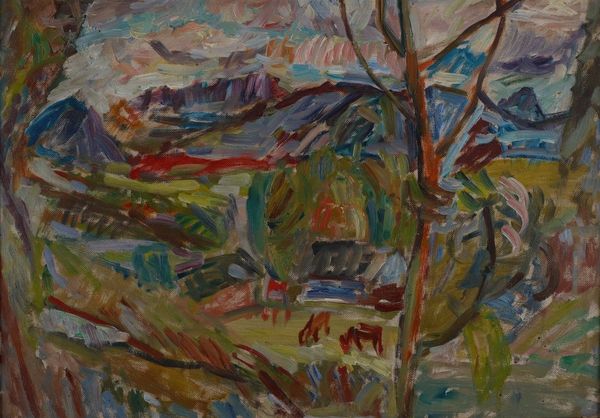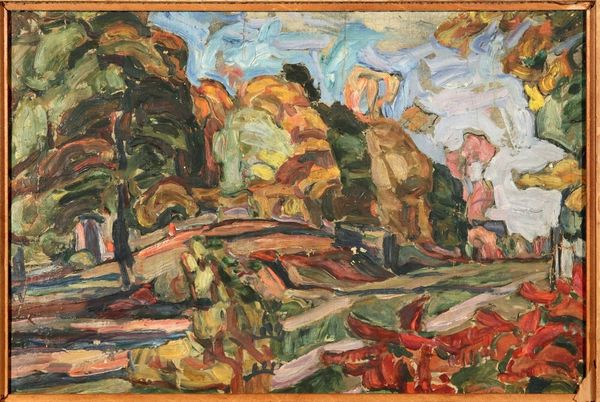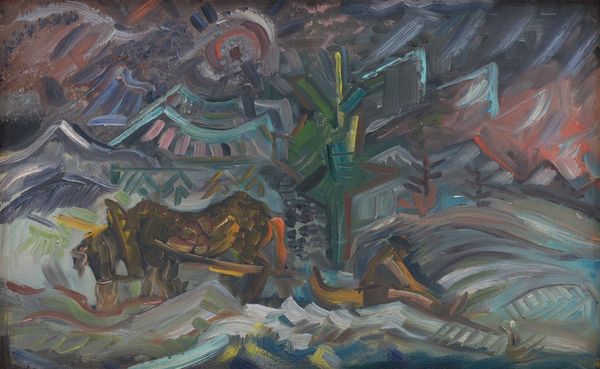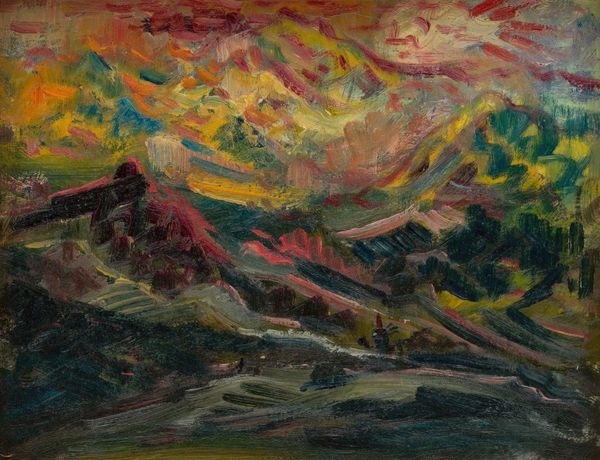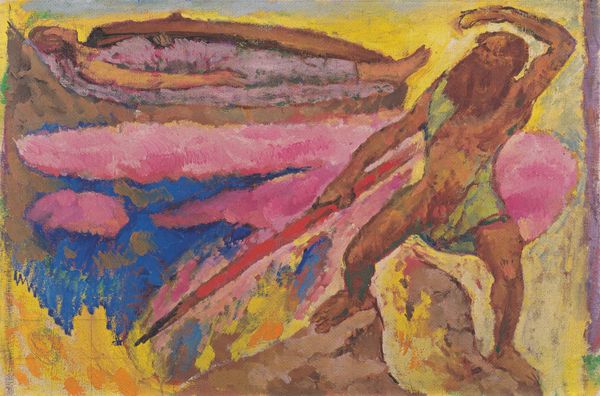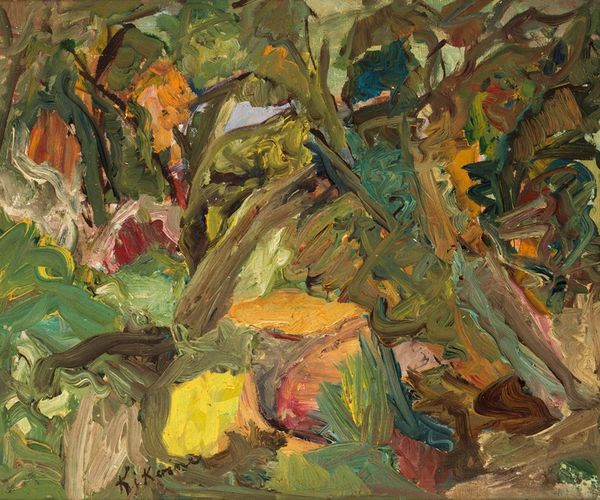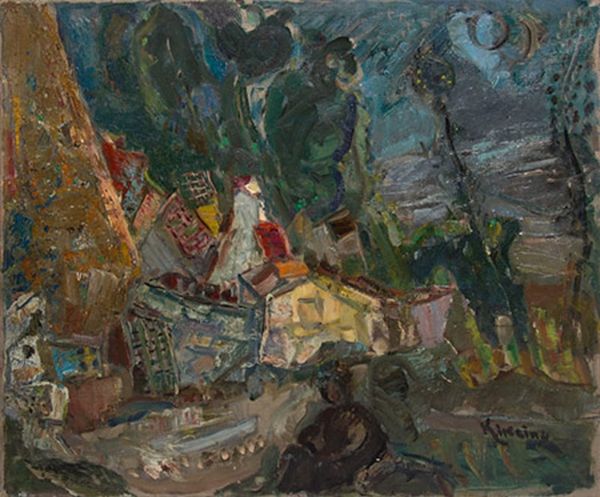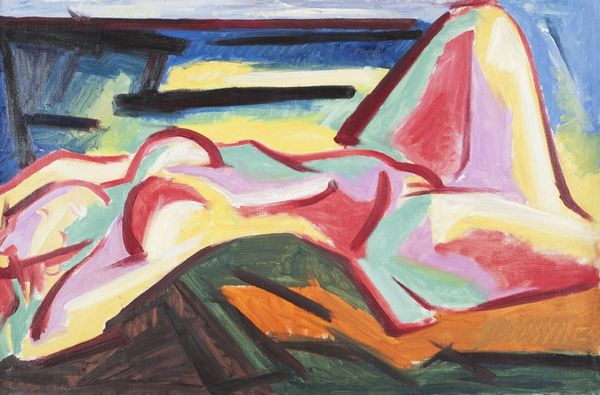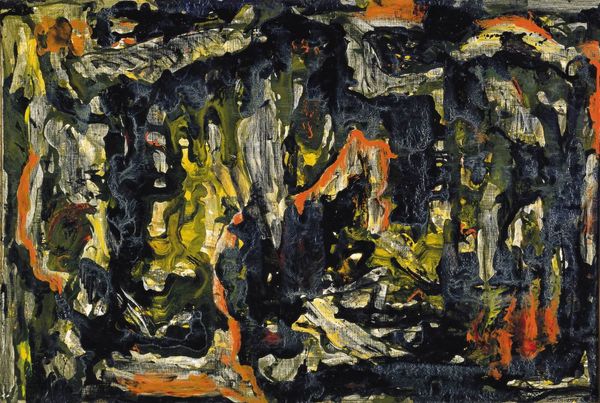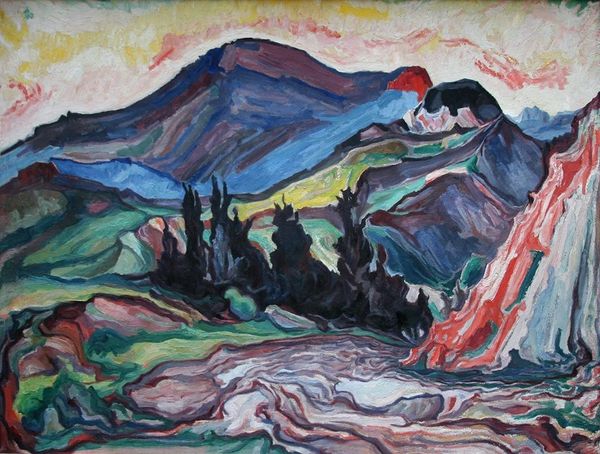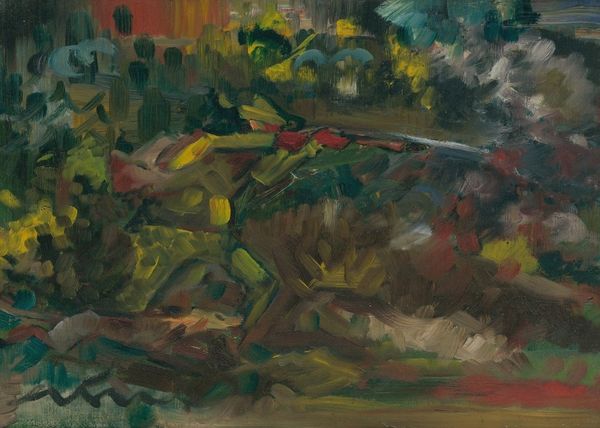
Copyright: Public Domain: Artvee
Editor: So, we have before us "Man on the river bank" from the 1930s, by Arnold Peter Weisz-Kubínčan. It’s an oil painting, and the brushstrokes are so expressive, almost agitated. The colors are also very evocative. What stands out to you? Curator: The most striking element for me is how the landscape acts as a psychological mirror. The man is dwarfed, almost consumed, by the raw power of nature rendered in vivid colors. Look at how the reddish mountains rise dramatically. Do you see any symbolism here? Editor: Possibly a symbol of man's insignificance, a vulnerability against something grander than himself? Or could that redness imply an impending doom during pre-war Europe? Curator: Precisely! The Fauvist style, with its deliberate use of non-naturalistic colors, heightens this emotional impact. Color here is not descriptive, but expressive. Notice how it amplifies a feeling of unease, perhaps premonitions of societal upheaval? And observe the deliberate distortion of form: is this a literal place or more of an internal, subjective landscape? Editor: It almost feels like a memory fading at the edges. Like something he once knew and loved slowly drifting away as new forces encroach. It almost evokes an unsettling nostalgic mood, like an outsider longing to return, to an era and home of which has long disappeared. Curator: Wonderful insight. It makes me think, is the 'Man' a representation of universal human longing and existential questions? How fascinating this evokes such timeless themes! Editor: This definitely prompts introspection regarding personal symbolism, universal experiences of isolation and vulnerability! Thank you.
Comments
No comments
Be the first to comment and join the conversation on the ultimate creative platform.

